Q&A: Foxes, Physics, and Fluffy Insects
It’s Q and A time! Can animals really sense impending dangers like storms and earthquakes? What is the universe expanding into? And how can we prevent the insect apocalypse? We've assembled a panel of experts to answer your science questions: physicist Jess Wade, infectious disease historian Kyle Harper, animal expert Jo Wimpenny, and insect lover Dave Goulson...
In this episode
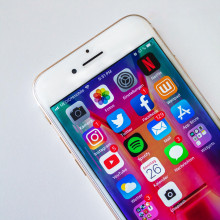
04:08 - How do anti-glare phone covers work?
How do anti-glare phone covers work?
Nanomaterials expert Jess Wade from Imperial College London is here to explain how the materials in your electronic devices make everyday life easier...
Jess - Yeah, this is actually a perfect question for me, because these are the kinds of materials that I research. The reason that you want an anti-glare phone cover is because when you're outside on a sunny day, like Joe is, even if you turn your brightness up really high, the light from behind you, so the sunlight, or if you're at home just light around you, goes through all of the different layers of your mobile phone; your screen, the optics, the thing that's emitting the light, and it gets to something at the back. And that thing at the back is usually an electrode. It's somewhere that we inject the charges, but crucially it's made of metal. So it's shiny. So what your sunlight behind you does is hits off that shiny layer at the back and interrupts the image that you're trying to look at, or the text message that you're trying to read. So what these anti-glare filters do, as Joe suggests, they're quite sophisticated optical components, and they basically take that unpolarized light from behind you, they turn it into something called circularly-polarized light, which is light where the electric field rotates out a kind of corkscrew shape, they turn it into one handedness of that. So maybe they turn it into left-handed circularly polarized light that hits off that metal electrode at the back becomes right-handed and then get stuck behind the anti-glare filter. It can't get out. So what your anti-glare filter does is effectively polarize the light and trap it inside your display so that you have much clearer resolution and higher contrast when you're looking at an image. Without it, that ambient light would distort what you're trying to look at.
Eva - The light that gets trapped then, does that turn into heat? Where does it go? Does it dissipate?
Jess - It just kind of bounces around. So it just bounces around inside the display, inside all of the different structures. It probably hits off the electrodes again and a little bit will invert the handedness again and then come out. But really there are so many layers of potential optical loss in your mobile phone. And what we're trying to do on a developing new materials side is make sure that they're as streamlined and as efficient as possible. So the light that comes out can all bypass the screen if we want it to, but gets stuck in the screen if we don't want it to distort what we're looking at.
Eva - And so do phones already have anti-glare filters fitted or can we buy extra good ones to stick on the phone screen if you wanted to read on the beach or something?
Jess - You for sure can buy extra good ones. I'm not entirely sure of the optics of all of the different ones that you'd buy, but there are really easy physics experiments you could do to try and understand exactly what they're trying to perform, but actually all smartphones, anything with an OLED organic light emitting diode display should have one of these anti-glare filters inside it anyway. And what we're trying to do on the kind of OLED side, the OLED design side, is make them as efficient as possible. So to make them emit actually twisted light so it can get through that anti-glare filter. So circularly polarized OLEDs are a massive thing, and it's amazing that Joe managed to ask such a perfect question.
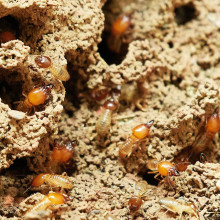
07:32 - How will a hotter climate affect insects?
How will a hotter climate affect insects?
Dave Goulson, from the University of Sussex, author of Silent Eart: Averting the Insect Apocolypse. Dave helps Nancy break down the facts...
Dave - Yeah, that's an interesting question. Not overall, probably not going to be great news for them, as you might guess. There'll be some insects that probably enjoy it. The kind of pesty insects like house flies and mosquitoes. They can breed fast. They're adaptable. They have big populations and they will probably just thrive. But sadly, the majority of the species that we would want to keep will do less well, some will just not like the warmer weather. So my favourites, the bumblebees they're big furry creatures adapted to cold climates and they simply overheat in warm weather. And they're already starting to shift away from the warmer parts of their ranges. You might think a lot of other insects like butterflies might benefit from warmer weather, but the evidence is that they're not. And it's probably because historically their ranges will have tended to shift towards the poles as it got warmer in previous climatic warming events. But now they're existing in very fragmented habitat. So they can't just gently move northwards because they've got to cross huge expanses of hostile habitat; farmland, motorways housing estates to get to the next little fragment of good habitat. So yeah, it's just one more stress that insects could really do without, and it's for most of them bad news, I'm afraid.
Eva - And so is climate change in general a big driver of the insect loss? How many insects are we at risk of losing with climate change?
Dave - Well, we are seeing a massive decline in the abundance of insects. Many insects have fallen in numbers by 50% or more in the last few decades. Probably most of that's been driven by habitat loss, primarily the growth of pesticide use in farming and gardens and so on and things like light pollution and invasive species and a whole bunch of other factors. And climate change is starting to kick in now and there's growing evidence that it's beginning to have an impact, but obviously unfortunately, that impact is likely to get much worse as climate change accelerates into the future.
Eva - And you mentioned different insects ending up in different locations. Can we expect any insects from the sort of warmer regions now to end up in countries like the UK, which are a little bit cooler?
Dave - Yeah, we can. I mean, in fact, a few have already invaded from the south. And so we do every year get one or two new species turning up and we may also rather worryingly have malaria-spreading mosquitoes back in Britain within the not too distant future, which would not be good news.
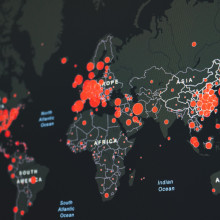
10:19 - Disease is more common during a crisis: why?
Disease is more common during a crisis: why?
Kyle Harper from the University of Oklahoma, is, unusually for our show, a historian, but we won’t hold it against him as he actually studies the history of infectious diseases. Author of 'Plagues Upon the Earth', Kyle is ready to pull on his historic expertise to describe what conditions bring about the perfect enviornment for disease transmission...
Kyle - Right. And unfortunately conflict and humanitarian crises are very favourable for the transmission of infectious diseases. So pathogens that are viruses or bacteria, parasites that have to transmit between hosts, really benefit from situations in which human beings are crowded. And that's one of the main drivers of transmission in times of crisis. But there are other things too. If you think of the kinds of things that happen in crisis, we know that it leads to breakdowns in systems of hygiene and sanitation and so much of our daily lives and sort of unspoken routines and the infrastructure that we rely on for clean water, things that we're privileged often in the developed world to take for granted, but that have helped humans gain a kind of partial and fragile control over infectious diseases. Those systems tend to break down, particularly access to clean water becomes more difficult, sometimes in situations where it's already very limited or fragile, in conditions where you have refugees crowded into camps or people migrating in desperate circumstances. It also is partly due to the fact that these sorts of circumstances tend simply to undermine human biological well-being all around. So if people are hungry, it makes it much harder for their bodies to fight off infection, so they become more susceptible to infection and severe disease.
Eva - And are there any examples throughout history where people have actually managed to mitigate some of these risks and prevent big disease outbreaks in these conditions?
Kyle - I mean, I think in many ways, the one way to understand the last few centuries is interplay between infectious diseases that get in some ways bigger and more virulent and more dangerous and humans collectively responding, bringing together science-enlightened policy to tackle what really are collective challenges. And this one of the tricky things that of course we're living through with COVID-19 is realising how public health is public. Our health is very intricately tied together. And so it requires political solutions to address these kinds of challenges. But yes, I mean, I think one of the real triumphs of humanity is figuring out how to bring science, to work together, to do things like create giant sewage systems that handle the problem of human waste and that deliver clean water. So from quarantine and lockdowns, which go back to the late Middle Ages, through the rise of modern public health infrastructure and compulsory notification and vaccination, humans have done a good job at many times working together to address these kinds of challenges. But obviously we're not all the way there yet. And we still face very grave threats to our collective wellbeing.

15:27 - Can animals really sense earthquakes?
Can animals really sense earthquakes?
Animal behaviour expert and author Jo Wimpenny, who’s just written a book looking into whether there’s any truth to the animals written about in our favourite childhood fairytales - Aesop’s fables, describes the difficulties of conducting research prior to and during a natural disaster, reminding physicist Jess Wade of more research...
Jo - Hmm. I love this question. There are so many anecdotes on this topic. So many reports of people seeing animals fleeing from an area or doing something abnormal and then an earthquake happening, or then a big storm hitting. And I know of one study of frogs in Italy, they were be monitored for their breeding behavior anyway, and an earthquake hit, so that the researchers did have the pre-, the during, and the post data. And they found that 96% of the frogs abandoned the pond that they were in about five days before the earthquake hit. They left. And then they came back about 10 days later. So it does seem that they were responding to something, they were detecting something in their environment, but we don't know enough about what that would be. And we don't have the prospective controlled experiments, I think to be able to properly put that to bed, as you said.
Jess - I just wondered, it reminds me so much of that work led by Professor Perdita Barran at the University of Manchester, looking for early diagnosis of Parkinson's and doing it by scent. You know there are the phenomenal people whose noses are trained to be able to recognise changes in smell. And you can actually predict if someone has Parkinson's disease for which there are very few diagnostic tests by smelling them and you can get it super early. And I guess animals are very attuned to all of that.
Jo - And we have dogs. I mean, there's a big line of research in medical detection dogs. I think there are certain types of tumours where people produce compounds which dogs can detect on their breath. Animals have pretty incredible sensory abilities. I would say there's no reason that they can't respond to these things. But yeah, it's still a little bit of a grey area.
Eva - And people have even been doing studies using dogs to try and sniff out COVID. There's been a variety going through in the airport or possibly in hospitals or in the line for a club. People have all sorts of ideas of where these could be used.

17:39 - How does my heart rate monitor work?
How does my heart rate monitor work?
Jess Wade from Imperial College London doesn't miss a beat in helping explain the answer to Douglas' question...
Jess - Actually your watch is remarkably sophisticated and it can measure lots of different things. The heart rate monitor is interesting. It uses light to measure changes in pressure in your arteries. So it's called the photoplethysmography sensor, and it shines a light on your arteries and your wrist is a good place to put it because there's a lot of blood nearby and you can detect it quite easily. It shines a light on that and it looks at the light that's reflected. So there's light out and then there's a detector on the watch as well. And when your heart beats, the main chamber of your heart, which I think is your left, according to my GCSE Biology, pushes this pulse of blood around your body. That causes these arteries to temporarily swell. And when they swell up, they change the way that light is reflected back into your watch, your mobile phone or whatever it is that you're using to measure your heart rate.
Jess - It can also hopefully measure changes in pressure, which is useful for people who have hypertension, because you can look at the amplitude of that signal and then a bunch of clever algorithms designed by whoever made your watch will convert those signals that they're getting into an actual heart rate. I think the other things that your watch can already do probably is measure the blood oxygen levels. So to measure the amount of oxygen in your blood, and that's something called the pulse oximeter, which is, again, a technology that's been really useful and important with COVID that looks at how much light is absorbed by your blood. And we can use that to look at how high your blood oxygen levels are. And particularly in people with coronavirus, they got very low, so it was a really good warning sign that they were suffering from the disease. But in the future, I see so many different applications of wearable technology and almost everyone I speak to has a new idea every day. You know, making blood glucose testing less invasive, being able to detect and monitor for diseases early, kind of coming into what Jo was saying about maybe changes in a scent or a biomarker that you could trace.
Jess - People are doing absolutely extraordinary things. You know, there's a fantastic research group in Northwestern University in the States lead by a guy called John Rogers. And he develops tech for monitoring the rehab of stroke patients, develops tech for looking at all different deep tissue blood levels and things like that, which are quite hard to monitor because they're deep inside you, but can tell us a whole bunch about different diseases that you can have. So I see it as this kind of beautiful area of really biology and physicians working with material scientists and physicists to see where technology could be applied and then use it to make doctors' and patients' lives easier. I really love it.
Eva - It's amazing to think how much data we must be creating, everyone wearing their watches and the heart rate being stored somewhere in a cloud, somewhere in a server some way. As we get further and further along, we're going to end up with such an enormous amount of data, we'll need the computer scientists to be developing new ways to store data more effectively too.
Jess - They're already doing that. And I think particularly in kind of rapid analysis of MRI images for the diagnosis of breast cancer, people are making really, really clever algorithms now to be able to identify things earlier and then be able to come in with a proper treatment plan. But I think it's incredibly exciting how much we're generating and really not only from a medical imaging perspective, but from a 'making your doctor's life easier' perspective. You know, you don't have to go physically into the hospital as much if you've got something monitoring your rehabilitation from a stroke, because that data can be sent wirelessly and efficiently to your doctor. That doctor can make a call about what you need to do next and then send you that information. So I think it's not just making our health easier, but it's also making our lives easier and society easier.
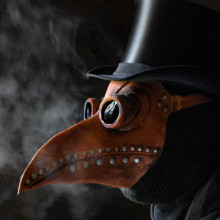
21:58 - Was the bubonic plague the worst epidemic?
Was the bubonic plague the worst epidemic?
Kyle Harper, author of 'Plagues Upon the Earth', compares the COVID-19 pandemic to other disease outbreaks throughout history...
Kyle - Well, it depends on what you mean by worst. And if you mean the worst infectious disease in terms of total mortality, it's probably not actually plague, but it's something like tuberculosis or malaria that cause more suffering and death than probably any other infectious diseases.
If you mean the worst infectious disease in terms of pain and suffering, it'd be very hard to say. You'd probably want to put syphilis on the list before it was treatable. It was a pretty miserable scourge on human societies and tertiary syphilis, very advanced syphilis, was so bad they used to treat it with malaria.
In fact, a scientist won a Nobel Prize for coming up with malaria therapy. Luckily antibiotics were discovered soon after. If you're just talking about what epidemics cause the most extreme, sudden mortality events, then it would either be plague or influenza. The 1918-19 influenza probably killed more people, but also global population was larger than even the great plague pandemics of the past.
But if you're talking about the proportion of a population that succumbed to a disease on a short timeframe then it probably is bubonic plague, which is a bacterial disease caused by Yersinia pestis, that's a very strange germ. It's really a rodent disease that is transmitted by fleas, although it can be transmitted directly by droplets between humans as well. But it causes the Black Death. It causes plague outbreaks in Europe, down to the 17th and even early 18th century. In parts of the Mediterranean, near east, even later than that. And it probably does more damage than any other disease. It's a really kind of mind-boggling phenomenon to try and even imagine.
The Black Death we know killed half the population in very significant areas. And you just sort of compare that to COVID-19 and think of the disruption that it's caused our society, which of course is very different. Our society depends on the basic control of infectious disease, of course.
But even so I think it is, as someone who thinks about past societies, it's such a challenge to imagine what it must have really been like to live in a city or a country where in the space of a year, half the people were simply gone.

26:29 - August Quiz: A question of 8s!
August Quiz: A question of 8s!
Our dream teams include; animal behaviour expert Jo Wimpenny, disease historian Kyle Harper, nanomaterial physicist Jess Wade and entymologist Dave Goulson...
Eva - We have a little quiz at this point in the program,e, and you can play along at home too. I'm splitting you guys into teams. You're now going to be two teams of two, Jess and Dave, you're team one; Kyle and Jo, you are team two, and you can of course confer to see what you think the answer might be. August is the eighth month of the year. So, this week's quiz is all about the number eight. In Round One, two of the answers are true and one is false and we need you to pick the false one. Jess and Dave, the first question is for you: Oxygen is the eighth element in the periodic table, which of the following about oxygen is not true. A) oxygen is the 10th most abundant element in the universe. B) oxygen is not flammable or C) liquid oxygen is blue. What do you reckon?
Dave - Oh, yes. My immediate reaction is that it's not flammable because, it's kind of necessary for things to burn, but, but then you're the physicist. So, I'm guessing this is probably your territory. Not mine.
Dave - I don't know because my favourite element by far is carbon. Feel like I could have nailed any answer on carbon but oxygen, I'm like, I'm going to offend all the chemists I work with every single day. Um, yeah, I'm happy to go with what you suggest, Dave, let's go with that.
Eva - So B oxygen is not flammable. That's your answer.
Jess - Yeah.
Dave - Fingers crossed.
Eva - I'm afraid. You're wrong. It's actually A) oxygen is actually the third, most abundant element. Not the 10th. Liquid oxygen is indeed light blue. And while oxygen makes other things burn much more vigorously, pure oxygen itself doesn't burn. Instead it's called an oxidiser. Kyle and Jo here is your first question. All arachnids have eight legs, which of the following animals are not arachnids, A) ticks, B )scorpions or C) spider crabs.
Kyle - Ticks are definitely arachnids. Trying to think of...
Jo - I would go with spider crabs, but I'm also quite worried that as a zoologist I definitely shouldn't be this.
Kyle - I think it's spider crabs. I think you're right, let's go for it.
Eva - You're correct. Spider crabs are crustaceans and they have 10 legs. Ticks, scorpions, mites and spiders are all arachnids. And recently we realised that horseshoe crabs are neither horseshoes nor crabs, but are also arachnids. Time for round two, which is all about unusual units of measurement, Jess and Dave get ready. Your first question is: In Imperial measurements, eight of which make up a mile, A) rod, B) chain or C) furlong.
Dave - Oh, well we were under pressure off after the first one. I hesitate to say, because the honest truth is I haven't got a clue. A total guess from me Jess would be furlong, but I really am clutching at straws or chains or rods or something.
Jess - So we've got rod, chain or furlong. Yeah. I'm going furlong. And I should get that because I'm a physicist and I work at Imperial.
Dave - Yeah. Well, we agree. Even if we don't really know the answer, let's go with it.
Eva - You're correct. It's C, there are four rods in a chain, 10 chains in a Furlong and eight furlongs in a mile. Furlong, as everyone knows now, furlong means furrow length and it was the length a team of oxen could plow before needing a rest. So, there you go. Kyle and Jo, your question now on the Beaufort scale, how are force eight wind speeds described A) is it a breeze? B) is it a gale or C) is it a hurricane?
Jo - Oh dear. I don't think I know much about this. I'm assuming that they get more severe as you go higher.
Kyle - Yeah. So it's a gale. You think it's a gale.
Jo - I'd go with gale then.
Kyle - The middle found safe. Let's do it.
Eva - Correct. It is B) The Beaufort scale is a scale from zero to 12, where zero is completely calm. And 12 is a hurricane, eight is a gale, and on land, it describes when twigs break off trees/generally impedes progress. At sea foam is blown in well-marked streaks along the direction of the wind. So, if you notice any foam blowing in a certain direction, you can say, ah, I know this is rated eight wind speed, and is a gale, wonderful. Well done. So what have we got now? We've got two points to team two and one point to team one. So, there's all to play for round three; we've got a supermarket sweep for our final round. We're really testing your credibility as experts and seeing if you know your apples from your oranges, Jess and Dave, according to a YouGov survey in 2021, which is the eighth, most popular fruit in the UK? Is it A) green grapes? B) lemons or C) clementines?
Jess - Oh gosh. This is so hard. Do you think people were really told lemons was an option or do you think they were just asked for their favourites? Because I think if they were asked, they wouldn't naturally think of a lemon.
Dave - I would guess not lemon, but I am really struggling over the other two. Both are quite nice. I'm happy to eat either.
Jess - I have a feeling it's clementines. I think grape score higher.
Dave - Okay. I'd be very happy to go with that guess.
Eva - Correct. It is clementines. You're right. Green grapes do score higher. They are third and lemons are ninth. So there you go. They are close, close to clementines there. Kyle and Joe, you have a similar question this time about vegetables. In the same poll what was the eighth most popular vegetable in the UK? Is it A) red onions, B) broccoli or C) sweetcorn.
Jess - It better not be sweetcorn or I'll be embarrassed. It's the worst.
Jo - I agree, actually, I would say perfectly would go higher.
Kyle - I like, I like that.
Jo - I don't know that we've had any A) answers yet. I'm just going on what?
Jess - No, ours was an A) our first answer was an A). And, red onions are a staple of so many dishes I do not believe they'd score that badly.
Jo - Typing a favourite. No, they're just like necessary aren't they. I'm overthinking this.
Kyle - They'd be my number one.
Jo - Shall we just go broccoli?
Kyle - Let's do it.
Eva - It is actually red onions. Broccoli scored sixth. And sweetcorn was 20th. So Jess will be pleased. The country has not let you down.
Jess - I'm happy for broccoli. I'm really glad.
Eva - And if my calculations are correct, that means we've got two points each on each side, which means it is time for the tie break. Now for this round, for this question, the closest team to the correct answer wins. Eight is the largest cube number in the Fibonacci sequence, which is the one where you add the previous two numbers together. So 1, 1, 2, 3, 5, 8, 13, etc. What is the largest square number in the Fibonacci sequence? What do you reckon?
Dave - Take a punt. I'm in your hands on this, I feel a physicist has a better chance for the biologist here.
Jess - Could you just choose any square number above a hundred and we'll go for that.
Dave - 144.
Eva - All right, Joe and Kyle,
Kyle - I was thinking 256.
Eva - All right, guys, in that case. Dave and Jess you're right. It is 12 squared. It is 144. You are now crowned The Naked Scientists' big boffin brains of the week. Congratulations. You can go tell your families that you won!

34:31 - Which foods are at risk without insects?
Which foods are at risk without insects?
Dave Goulson predicts that we could be witnessing the insect apocolypse. Listen in to find out which of our supermarket favourites might be the first to go if efforts aren't put in palce to mitigate the decline is insect populations...
Dave - There are an awful lot actually that aren't included, but roughly three quarters of the crops that we grow in the world need pollination to some extent, meaning that the yield is increased by pollination. So everything from apples and cherries to blueberries, strawberries, raspberries, loads of vegetables, like courgettes and pumpkins and squash and tomatoes and chilli peppers, even coffee and chocolate depend upon insect pollinators. So, I mean, there are an awful lot.
I think actually the one that if I had to pick a crop, which is likely to be the first one to suffer from a shortage of pollinators, it's probably going to be almonds. I say that because 80% of the world's almonds are grown in Northern California in one small region. It's very intensively managed. There are very few wild pollinators. Almost every honey bee hive in North America is shipped to California for the almond pollination in February. And there's just about enough. There's about two and a half million hives taken to California every year. And that's just about adequate to pollinate the almonds. But if anything happens to those honey bees, if there's some, any kind of disease outbreak or anything else, then there won't be enough. And the almond yields will plummet and the price of almonds would go up, which I'm sure we could all cope with, but they would be the first sign of much worse things to come, I'm afraid, including no hot chocolate or coffee.
Eva - Well, it is an absolutely enormous number of hives to ship across. Is that basically all the hives in the US?
Dave - Yeah, absolutely. It's almost every one and they pay, it's about $300 a hive to rent them just for three weeks while the almonds flowering. So, it's a huge business and a big money spinner for the beekeepers. But as I say, it's right on the edge of what's possible. And it seems like we really have put all our eggs in one basket in that particular example.
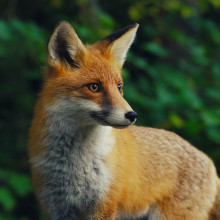
37:46 - Are foxes really cunning?
Are foxes really cunning?
Jo Wimpenny examines our tendency to anthropomorphise animals, stemming from fables and historic storytelling...
Jo - It's a very, very persistent characterisation of foxes. And it's one that goes back millennia.
I'm not even sure that we could ever know when this idea of foxes being cunning and crafting and sly first came about, but certainly several of Aesop's fables include fox characters. They're pretty consistently portrayed as the quick witted animal. That's always tricking others to get out of trouble.
And the second century Roman author Aeliun, he referred to foxes as crafty creatures and masters of trickery. He even talked about foxes plotting against hedgehogs, which I love. And so, yeah, we kind of have this wonderful collective consciousness, I suppose, of foxes as being this, the words just sort of go together so easily.
If we get to the actual science and focus on fox biology, what we know is that these are highly adaptable, opportunistic animals. So what looks a bit like craftiness or cunning actually boils down to certain biological traits. The fact that they will eat pretty much anything, they're not fussy in any way. They've evolved really, really specialised predatory senses to catch very specialised rodent escapers. They're rapid learners. We know that they can, for example, learn to avoid crossing roads in cities during the daytime. And they'll only do it after midnight, which coincides with when there's less traffic on the roads. They can remember where they've stashed food and recover that food appropriately, and they can be bold and exploratory. And particularly in the human environment, they've adapted incredibly well to the presence of humans. You know, they've learnt how we operate, how we behave and they've capitalised on it so that they can exploit our environment.
So, all of that packaged together probably gives the impression that they're using their wits to get ahead. But actually there aren't very many scientific studies looking at fox cognitive abilities and there's certainty, no evidence that I know of that says that foxes can use tactical deception to get ahead.

40:30 - What is the universe expanding into?
What is the universe expanding into?
Jess Wade from Imperial College London explains...
Jess - It's such a good question with such an annoying answer because it's really expanding into itself!
If you think about the Universe as being the Universe, it's just expanding; if the universe is everything, what's on the edge of the Universe Is the Universe, and what's on the edge of that is also the Universe! And you go layers and layers and layers and can freak yourself out with how much Universe there is.
The way that we're taught it in undergraduate physics is you kind of imagine that you draw a grid of dots onto a balloon, and then you blow up the balloon and the space between the dots is expanding, right? But if you're standing at any one of those dots, which could represent a galaxy, you see everything else receding away from you, kind of traveling away from you really fast.
So, it's just like the Universe, it's just like blowing up a balloon. And I'm sorry that that's not a better answer, but you'll have to go to some general relativity lectures to understand probably why...

41:46 - Could an 1890 pandemic have been a coronavirus?
Could an 1890 pandemic have been a coronavirus?
Kyle Harper describes what we can decipher from prior pandemics and their records...
Kyle - It's an interesting question. And, at this point still a kind of speculative hypothesis: but, we know that about a generation before the Spanish flu, there was a global pandemic that people at the time considered influenza. It's actually interesting in a lot of ways, because it's the first global pandemic where you have a really fairly robust global network of instant communication. So the news can travel and people actually can perceive the pandemic in real time as it's happening. So, actually the word pandemic existed before that, but it's actually when the word sort of became a household term.
It was not quite as nasty as the Spanish flu, but it was still a pretty severe disease with a lot of morbidity and mortality. It moved very fast, as a respiratory disease. So the thinking has always been, this it's called the Russian flu, it was believed to have originated somewhere in Russia or central Asia.
The thinking has always been, this was kind of one of these global waves of influenza, which is a reasonable hypothesis. I think still, probably the most likely one, but obviously we're pretty interested in coronaviruses now. There are actually many species of coronavirus. There's four species of coronavirus that are endemic in human populations. They circulate constantly, most of us have probably had a coronavirus or two even before the COVID-19 pandemic, and they cause pretty mild respiratory and the common cold.
The study of one of these coronavirus species, it's called OC43, which is kind of unimaginative, shows that it's most closely related to a bovine coronavirus. So, there was probably in the recent past a common ancestor that infected cows and when it crosses the species barrier, it adapts to humans. It becomes endemic in human populations.
Scientists can use a technique known as molecular clock dating. That's an analysis of how long it would have taken for certain evolutionary changes to accumulate. So, by measuring the genetic differences between human coronavirus OC43 and its close relative bovine coronavirus, it's been estimated that this evolutionary divergence happened around 1890, which means that there should be some new respiratory disease in human populations right around the time there's this big dramatic global pandemic.
So, people have said maybe that wasn't influenza; maybe it was the emergence of this new species of coronavirus as a human disease. I think that's perfectly logical on some evolutionary grounds. But it's still, as far as I know, nobody's been able to prove it. I'll just say that it's the kind of thing that is now potentially provable, genome sequencing technologies are so powerful that it's increasingly possible to recover fragments of pathogen DNA, or even RNA, from past samples, whether from archaeological samples, from skeletal remains or from sometimes aldehyde preserved tissue.
Measles virus has been recovered from the very early 20th Century. I think there's surely someone out there who could find, potentially, lung tissue of somebody who died in the early 1890s and it might be possible to test genetically and really get smoking gun evidence, whether it was influenza or coronavirus.
It's an interesting question to think about. We don't really know. We could potentially, if someone's lucky enough to find a museum specimen, be able to recover the genome of the pathogen, but until then, it'll just sort of remain an interesting speculation. And, it is interesting to think about a possible parallel for the emergence of a new coronavirus and to think about what happens when one of these enters human populations and then unfortunately comes to stay.
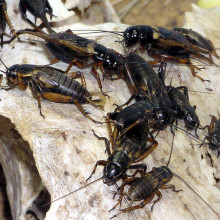
45:52 - How can we prevent the insect apocalypse?
How can we prevent the insect apocalypse?
Dave Goulson describes what has happened to insect populations over the past few decades, and what you can do to rectify the damage caused...
Dave - The final quarter of Silent Earth, my new book is all about what we can do. in a way it's quite nice because with a lot of environmental issues, you know, people feel pretty helpless and sort of whatever you can do doesn't seem significant. But, because insects live all around us, they're in our gardens and parks and so on. And, most of them haven't gone extinct and if we just look after them better they can recover really quickly; then, actually, it's really nice because people can get involved. They can do things. They can see those things working.
So, the obvious thing, if you're lucky enough to have a garden, is to make that wildlife friendly: plant some bee and butterfly friendly flowers; be more tolerant of what are often called weeds but which are basically native wildflowers; don't spray any pesticides; don't mow your lawn too often, turn it into a wildflower meadow; have a little pond, a bee hotel and so on. And, in no time at all, you've got your own miniature insect haven in your back garden! Literally thousands of species can live in a garden. It's quite incredible.
Then if you haven't got a garden, well, a window box is better than nothing. Grow a bit of marjoram in a pot. At least some bees and butterflies will be happy. Or you can get involved in local campaigns. For example, there's an organisation called Pesticide Action Network that are championing pesticide-free towns. There are lots of local campaigns to do that. In fact, I have a government petition I launched last week urging the government to ban the use of pesticides in towns, which I'd urge anyone to sign if they think that's a good idea.
Also, there are campaigns locally to put more flowers into parks and road verges and roundabouts, and those kinds of things, which I think is a really nice use of what's otherwise rather boring mown space.
Finally think about the sort of big picture of the impact you have when you go to the supermarket. So, if you buy organic food, that reduces the number of pesticides being used; if you buy local seasonal produce, you're generally reducing your impact. Eating less meat reduces your impact. You know, we can all do these little things, and if we all, if enough people did them, then it would really make a big difference.
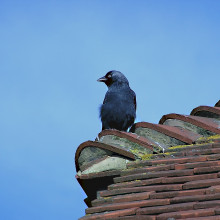
48:11 - Are crows really clever?
Are crows really clever?
Jo Wimpenny is an animal behaviour expert with a particular interest in crow cognition...
Jo - It's a great question. The crows are members of the corvid family of birds. That includes the ravens and magpies, jays, rooks, and others. And, it's fair to say that, over the last 20 to 30 years, they've really risen in prominence and got a bit of a reputation for being really, really clever birds.
So, the first thing to say, I think, is what do we mean by clever? What is intelligence? These are questions that are not easily answered. They are things that have plagued the field since the earliest days. You could still have an entire conference on the topic of animal intelligence and what it actually is, and actually human intelligence! We don't know how to easily define it even for our own species. So, being able to roll a definition out to animals is really, really difficult. That means that there's no single gold standard test for intelligence that we can just roll out across the animal kingdom and compare them and rank animals in terms of cleverness.
The consensus seems to be that, when we talk about intelligence, we're really talking about a package of different abilities, which animals use to solve problems in their environments. That could be rapid learning speed; the ability to generalise; the ability to solve problems creatively or insightfully; flexible memory skills and social manipulation... It's sort of a whole package of things.
I have to say that the corvids are probably ticking every box when we go through that. So they really do have a well-deserved reputation. Unlike the foxes, we have the scientific studies to show that they are sort of living up to their reputation, to such an extent that they have been labeled feathered apes for their incredible similarity. They show this striking convergence in ability which is quite astounding given that the last common ancestor was at least 280 million years ago. Something like that.
So, then we come on to the next part of the question I think, which is how do they do it when their brains are so small? You think about the selective pressures that birds have gone through in evolutionary history. It's really been jettisoning non-essential weight because they need to fly. That means they need to be light and efficient, so their brains are very small and very light. But, what they do is they pack the brains full of neurons, at a much higher density than mammal brains. So, for something like a corvid or a parrot, they might have the same number or even more neurons in the parts of their brains associated with higher cognitive abilities compared with a monkey. We're not even correcting for body size here. So a monkey, which is bigger in absolute terms, might actually have fewer neurons in the parts of the brain that are associated with that. Birds have kind of got around that by structuring their brains very differently, compared with mammals.
One of the other big differences is that they don't have what we think of probably as the typical brain structure. They don't have this wrinkly layer around the brain. It's called the neocortex. The first anatomical studies of birds showed that they didn't have this, sa mammals do. So, the association came to be that mammals probably are more intelligent and it must be down to this wrinkly outer layer. We now know that beds have a functional analog in their brain, but it's structured differently. The neurons are in clusters.
Related Content
- Previous Can two light rays collide?
- Next What can NZ do about Delta?










Comments
Add a comment